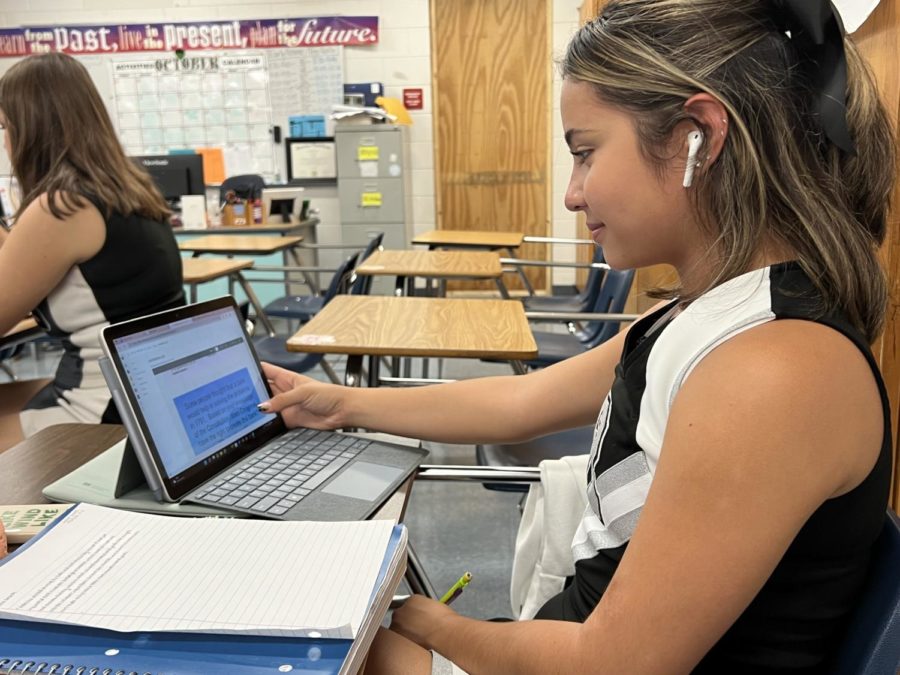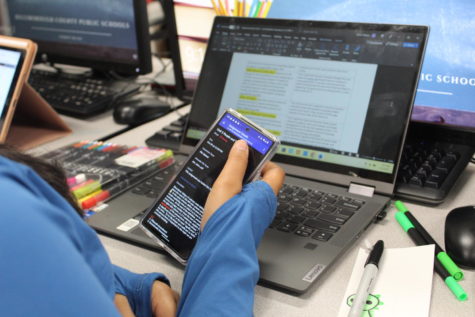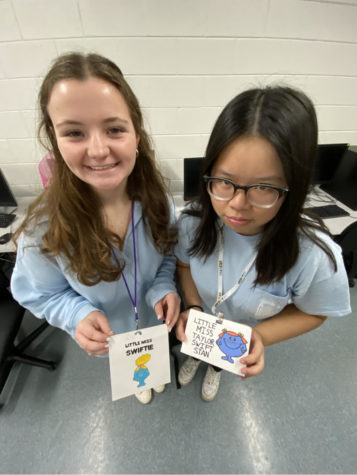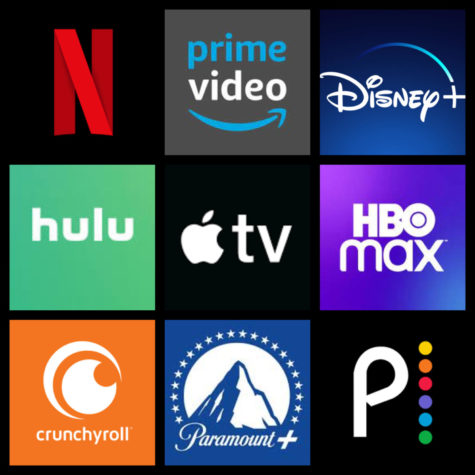More Technology May Not Always be the Best Thing
Increased incorporation of technology into education may be causing more problems than they fix.
Photo Vikram Sambasivan
Sophie Gomez (’24) working on an online Advanced Placement United States History assignment while listening to music.
October 31, 2022
The world is getting smaller. Technology has allowed for increased globalization, for the connecting of peoples and cultures which is unprecedented in the known history of humanity. But too much of anything is never any good.
With the incorporation of tools, such as Canvas, into our middle and high school education systems, students and teachers have become more accessible. Now this may sound like a good thing, but in actuality, it is suffocating.
So many modern companies preach a corporate anthem of work-life balance, yet those same values don’t seem to trickle down into our school systems. Tools such as Canvas are allowing teachers to assign students work at all times, even if they don’t tell the student about said assignment in person. You cannot leave school anymore. Even if you just decide to turn off your phone to focus on other things, you risk missing an assignment. Not only does such lack of separation turn modern students into laborers rather than leaders, it has detrimental effects on student stress levels.
“Studies have shown that 75% of high school students and 50% of middle school students are stressed because of their school work,” Teenager Paige Venable said in a “Teen Takes” article.
The incorporation of so much technology into modern education has also lead to increased screen time for students. School becoming a constant presence in the life of every student means that screens also become a constant presence, or at least more than they already were.
We are on our phones or our devices constantly. Out of fun, many times, but also out of necessity. We are constantly scrolling, checking texts, snapping people, refreshing our email (when we’re feeling business-like) and much more. Now, schools add on to the list of things that we do on our phones with virtual assignments. Sure, it makes it more convenient…having all of our assignments in one place, but our eyes might disagree with prioritizing convenience over health.
According to the American Academy of Child and Adolescent Psychiatry “…teens spend up to 9 hours [using digital devices]. While screens can entertain, teach and keep children occupied, too much use may lead to problems…Too much screen time may lead to: sleep problems, lower grades in school…, less time with family and friends…, weight problems…, poor self-image and body image issues and fear of missing out.”
Despite the negative health effects of increased screen times, many students have had to consolidate all of their assignments, note-taking and other school-related items for the sake of efficiency and overall convenience. However, what many students don’t take into consideration is the negative effect of this increased technological presence on academic performance in comparison to more traditional methods.
A 2021 study from the University of Tokyo “…revealed that writing on physical paper can lead to more brain activity when remembering the information an hour later.”
Setting aside the adverse physical and mental effects, technology isn’t for everyone…quite literally. Technology is all about inclusion. It has given people who would not be considered successful or even useful in other fields an area in which they can survive, thrive and dominate. So, it only serves as a source of irony that the increase in the incorporation of technology in the classroom has caused for more students to be excluded.
If a student is of low socioeconomic status and cannot afford the technology which is suddenly a necessity to academic success, that student is effectively being punished and penalized for having a lack of privilege. Instead of leveling the playing field, technology left many people at a severe disadvantage which wasn’t as prominent before the excessive incorporation of technology into the classroom.
According to the American University School of Education, “About 17 percent of students are unable to complete their homework due to their limited access to the internet. Additionally, 50 percent of low-income families and 42 percent of families of color don’t have the technology required for online education, according to the Education Trust.”
Now, I will concede, the incorporation of technology in the classroom isn’t a bad thing. It allows students to see models and images of things which we cannot conceptualize in our heads, access to unprecedented amounts of information, to complete labs which no ordinary high school could perform with the limitations of public schools and it allows students to pursue opportunities which just weren’t there with education before heavy incorporation of technology. I don’t have a problem with any of this. I only have a problem, when the technology becomes overbearing, bordering on the oppressive.
I love technology just as much as the next guy. I regularly hit an average of 18 hours of screen time on my phone and laptop, and I’m the person who will brag about that. I love seeing technology in the classroom because it provides a learning experience which is unprecedented in the scope of humanity. However, when I cannot leave school at school, when I cannot separate myself from the stresses of school because they come home with me everyday in my pocket, I cannot condone it. I will not sacrifice my freedom and peace of mind (not to mention physical health and academic performance) just because classes being more digital just makes things easier. The world is getting smaller, and it’s beginning to suffocate me.






















